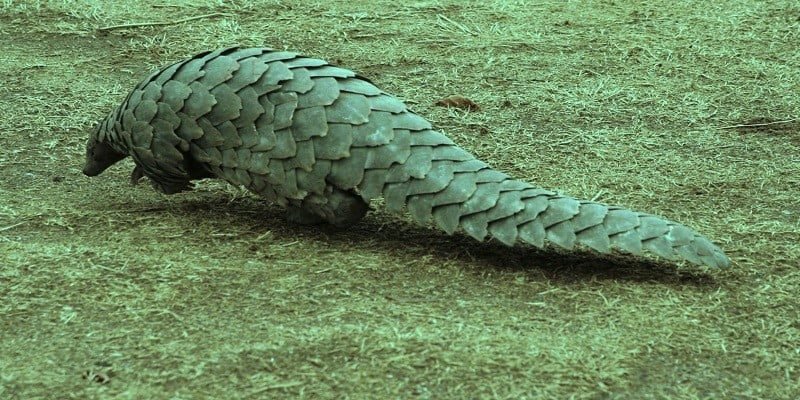Brief Introduction To Wildlife Resources:
India: A Land of Abundance and Diversity:
India is a country of Resources. Whether it is Natural resources or Human resources, we as a Nation always stand first. World’s second most populous country has been consistently supplying minerals, materials, crops, grains, spices, agri-substances, dairy products, forest products, and so many other things to the entire world for the last couple of centuries. In fact, the richness of our country doesn’t end here. We are a bio-diverse country, with nearly 6.5% of the world’s known wildlife species.
Wildlife Crisis in India:
As per the report of WWF, approximately 7.6% of the world’s mammals and 12.6% of the world’s birds are found in India. But unfortunately, these wildlife resources have been depleting rapidly due to illicit demand for wildlife and its products across the globe. These foreign demands indirectly encourage the killing and poaching of wild animals and birds across India. Due to the rise in Wildlife crime, many animals and birds in India are on the verge of extinction which is literally an alarming sign for the entire sub-continent region. Unimaginable wildlife resource reduction disrupts ecological balances significantly.
What Do The International Organisations Say About Wildlife Crime?
Combatting Wildlife Crime:
Wildlife Crime: Violations of Laws Protecting Natural Resources and Management. This includes the illicit exploitation of natural resources, such as the poaching of animals and the unauthorized logging of trees. It may also include subsequent acts, such as the processing of fauna and flora into products, their transportation, sale, and possession. The UNODC is mandated to support its member states fight wildlife crime. The United Nations Convention against Transnational Organized Crime (UNTOC) is an important instrument providing the necessary legal framework for international cooperation in combating wildlife crime. Surprisingly in India Wildlife poaching is increasing day by day. This crime is directly damaging the ecosystems, impacting food security, and affecting the livelihoods of rural communities.
Endangered Species Under Threat:
Major wildlife crime in India includes poaching of tigers, and rhinos and the sale of Star tortoises, Pangolins, and elephant tusks. Tigers are an endangered species, poached for their skin and bones to cater to an illegal market. Tiger body parts serve Asian medicine; claws for jewelry, whiskers as potent remedies. Same time there is a soaring demand for Indian one-horn Rhinoceros all across the sub-continent. According to a report by TRAFFIC and the International Union for the Conservation of Nature (IUCN), sophisticated poachers are using veterinary drugs, poison, crossbows, and high-caliber weapons to kill rhinos. Ancient trade routes for salt, spices, and wool are being used to smuggle animal skins, bones, and horns.
Products That Are Made From Wildlife Resources:
Cross-Border Wildlife Smuggling:
These illegal goods are sent to buyers based largely in northern India and are then smuggled out of the country through couriers. The main route is via Nepal, with whom India has a porous border, or directly across the border to China. More recently, routes through Myanmar have also been used. Star tortoises from South India are illegally traded in huge numbers. Due to their popularity in Feng Shui, they are kept as pets, believed to bring prosperity, and can cost as much as $500 in the illegal market.
Illegal Trade Menace:
Pangolins are traded in international markets especially in China and far Eastern countries like Laos, Cambodia and Vietnam, etc. for their scales which are used in Traditional Chinese Medicine (TCM). Even Pangolins are sort of exotic delicacies in many high-end restaurants in these above said countries. Many protected marine species such as sea cucumbers, mollusks, sea horses, and coral are also illegally harvested in Indian waters for export.

Recent Trends Of Wildlife Poaching In India:
Lockdown Threat:
Recently, a study conducted by TRAFFIC (a wildlife trade monitoring network and an NGO working globally on trade in wild animals said that between February 10 and 22, the number of animal poaching incidents was 35 while during the lockdown between March 23 and May 3, the number escalated to 88. TRAFFIC, which operates as a program division of WWF India, found a significant increase in reported poaching of wild animals in India during the lockdown period irrespective of geographical region or state or to any specific wildlife area. The study indicates that despite consistent efforts by law enforcement agencies, wild animal populations in India are under additional threat during the lockdown period.
Alarming Trend:
Poaching for meat surged during the lockdown, rising from 22% to 44% of reported cases. Lockdown led to higher poaching of ‘small mammals’ like hares, pangolins, and monkeys for meat or local trade.The number of cases for these rose from 6 (17%) to 22 (25%) in between the pre and post-lockdown periods which was quite alarming in nature.
Lockdown Wildlife Trends: Leopards & Pet-birds:
Amongst all of them, Leopard poaching was the highest in number. Wild pet-bird seizures dropped from 14% to 7% during the lockdown, possibly due to restricted movement. Lockdown saw the targeting of popular meat sources like Indian Peafowls and Grey Francolins. There was less reporting of poaching and illegal trade in tortoises and freshwater turtles, with almost no seizures of these species during the lockdown period.

Steps Taken By The Government Authorities To Curb Down Wildlife Poaching:
Strengthening Wildlife Protection:
GoI has brought strong legislation that covers wildlife poaching as a heinous crime under the Wildlife (Protection) Act, of 1972. Enhancing Implementation and Enforcement to Combat Transnational Wildlife Crime. Govt. must create, enforce, and oversee wildlife protection rules for effective conservation.
Preserving Wildlife:
We, as fellow citizens must learn our duty and responsibility towards the environment. We simply can’t take Wildlife poaching for granted. A minor variation in biodiversity may lead to a fatal disaster in the future. Safeguarding our environment and its inhabitants is our duty for a sustainable future. Let’s act responsibly for generations to come.
**********
Disclaimer:- Views expressed are the author’s own.




